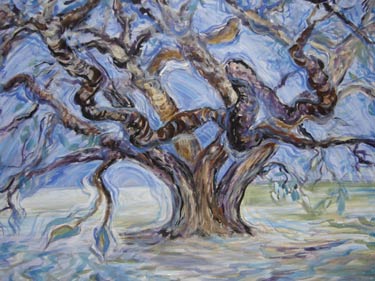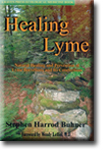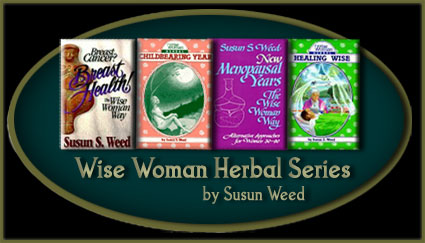Plants Are All Chemists
Excerpt from The Lost Language of Plants
The Ecological Importance of Plant Medicines to Life on Earth
by Stephen Harrod Buhner
In 1803 Frederich Seturner isolated the first individual plant constituents from opium and named them alkaloids, some 140 million years after complex land plants created them for reasons of their own.  Plant chemistry has not been studied very long in the scheme of things; it is still not very well understood..
Plant chemistry has not been studied very long in the scheme of things; it is still not very well understood..
Consider: Each of the estimated 275,000 different species of plants on Earth contains several hundred to several thousand unique chemicals. The majority of these species manifest as millions of different individuals, all of them generating different variations, sometimes significantly, on their species’ chemical theme. A plant with one thousand different chemical constituents can literally combine them in millions of different ways.
To compound the complexity, these combinations, added to those of other plants or of other organisms, produce synergistic results that are not predictable. Even a tiny change in dosage or combination can produce significantly different outcomes. Basically, the little that people currently know about plant chemistry is not very much.
This ignorance is magnified by our tendency (because of our upbringing) to think of plants as insentient salads or building materials engaging in chemical production processes that just happened by accident and, in consequence, have no purpose or meaning. Phytoexistentialism.
Still, here we are.
------
The Dance of Plant Chemistry
The carbon atoms that become available from the breakdown of CO2 during photosynthesis form the backbone of all plant chemistry. Plants use this carbon (along with hydrogen, oxygen, and nitrogen) to make their physical structure (whether a huge redwood or a tiny violet growing along a mountain path); primary compounds such as sugar, starch, and chlorophyll; and hundreds of thousands, perhaps millions, of other, complex, secondary compounds: “acids, aldehydes, cyanogenic glycosides, thiocyanates, lactones, coumarins, quinones, flavonoids, tannins, alkaloids, terpenoids, steroids” and more.2
Adding to the complexity, all these compounds can be made using different metabolic pathways—different construction techniques, as it were—and each family of secondary metabolites can contain incredible numbers of substances. Simply altering the relationship between four sugar molecules, for instance, can create over 35,000 different compounds. Over 10,000 alkaloids, 20,000 terpenes, and 8,000 polyphenols are known. About one new alkaloid is identified each day.3
Even though many of these compounds are present only in parts per million or even parts per billion or trillion, they exert significant bioactivity. Their bioactivity can increase substantially, sometimes by several orders of magnitude, when they are combined.4 Through complex feedback loops, plants constantly sense what is happening in the world around them and, in response, vary the numbers, combinations, and amounts of the phytochemicals they make.
--------------
Plant Compounds as Medicines for the Plant Itself
As plants grow, they produce a complex assortment of compounds to maintain and restore health. These include: tannins; antibiotic, antimicrobial, and antifungal compounds; mucilages, gums, and resins; anti-inflammatory compounds; analgesics; and so on. They are stored in different parts of the plant, being released in varying combinations and strengths as needed.
Often these compounds are highly reactive when combined or exposed to air and so are kept isolated in holding cells located throughout the plant. The plant can increase the quantity of any of these compounds at the point of need or translocate them extremely rapidly through its tissues.29
Antifungal, antibiotic, or antimicrobial (preinfectious) compounds protect the plant from invading pathogenic organisms. For example: The tulip tree (Liriodendron tulipfera) produces a number of strongly antimicrobial alkaloids (dehydroglaucine and liriodenine) that it stores in its heartwood to protect it from invasion by microorganisms. Chicory (Cichorium intybus) produces a number of strongly antifungal compounds to protect its leaves and roots from pathogenic fungi.
The compounds are so potent that even when chicory roots are kept moist on a plate for lengthy periods they will not mold. Other chicory compounds strongly protect against damage or infection from nematodes and other small organisms.30 Plant antimicrobial compounds such as those in chicory are active against microorganisms in exceptionally minute concentrations, ranging from one part per thousand to one part per million.31
During infection other kinds of compounds can be brought into play. Aromatic coumarins in such plants as potatoes increase rapidly at the site in response to any pathogenic organism.  32 Cyanogenic compounds are also commonly present in at least a thousand plants where they are released as hydrogen cyanide gas to kill invading organisms.
32 Cyanogenic compounds are also commonly present in at least a thousand plants where they are released as hydrogen cyanide gas to kill invading organisms.
In many instances invading pathogens release their own compounds that are toxic to the plant. Plants immediately begin to identify these compounds and create chemistries designed to counter them. At the same time, the plant will begin to generate unique compounds—phytoalexins—at the site of infection that are never present in the plant until an infection occurs.
When fungal spores take hold on a leaf surface, for instance, and begin inserting growth tubes into the leaf, a plant may begin to synthesize a phytoalexin specific for that fungus. The synthesis begins immediately, can be detected after an hour or two, and reaches its highest concentration in 48 to 72 hours. The phytoalexin is concentrated in leaf cells and pushed out onto the surface of the leaf where the fungus has taken hold.33
-------------
Plants, and their chemistries, do even more, of course. They are intimately interwoven into the lives of all organisms on Earth. And the roles of plants are still more complex. They exist not for themselves alone; they create and maintain the community of life on Earth, they produce the chemistries all life needs to live, and they heal other living organisms that are ill.
Chapter Seven Notes
2. Alan Putnam and Chung-shih Tang, “Allelopathy: The State of the Science,” The Science of Allelopathy, ed. Alan Putnam and Chung-shih Tang (N.Y.: John Wiley and Sons, 1986), 4.
3. David Hoffmann, Phytochemistry: Molecular Veriditas, work in progress, 31.
4. Frank Einhellig, “Mechanisms and Modes of Action of Allelochemicals,” and Putnam and Tang, “Allelopathy,” both in The Science of Allelopathy.
29. J. B. Harborne, Introduction to Ecological Biochemistry (London: Academic Press, 1982), see especially chapter 9, 227–259.
30. Hiroyuki Nishimura, et al., “Ecochemicals from Chicory Rhizome,” in Biodiversity and Allelopathy.
31. Harborne, Introduction to Ecological Biochemistry, see 227–259.
32. Ibid, 235.
33. Ibid, 242; Shigeru Tamogami and Osamu Kodamal, “Jasmonic acid elicits momilactone A production: Physiology and chemistry of jasmonic acid in rice phytoalexin production,” in Biodiversity and Allelopathy.
Excerpt from The Lost Language of Plants
The Ecological Importance of Plant Medicines to Life on Earth
by Stephen Harrod Buhner
The Lost Language of Plants:
The Ecological Importance of Plant Medicines to Life
 by Stephen Harrod Buhner
by Stephen Harrod Buhner
Nourishes your soul. 325 pages
This could be the most important book you will read this year. Around the office at Chelsea Green it is referred to as the ""pharmaceutical Silent Spring."" Well-known author, teacher, lecturer, and herbalist Stephen Harrod Buhner has produced a book that is certain to generate controversy.
Price: $19.95
Order The Lost Language of Plants in our Bookshop

 Healing Lyme:
Healing Lyme:
Natural Healing and Prevention of Lyme Borreliosis and Its Coinfections
by Stephen Harrod Buhner
Healing Lyme examines the leading, scientific research on Lyme infection, its tests and treatments, and outlines the most potent herbal medicines and supplements that offer help, either alone or in combination with antibiotics, for preventing and healing the disease. It is the essential guide to Lyme infection and its treatment.
Find out more about Stephen Harrod Buhner
Paperback, 272pp
"The first 75 pages are as good a review of the scientific literature as I've seen. . . I was impressed by [Buhner's] grasp of the literature. He really did his homework." - Richard Horowitz, President ILADS.
Price: $19.95
Order Healing Lyme in our Bookshop







